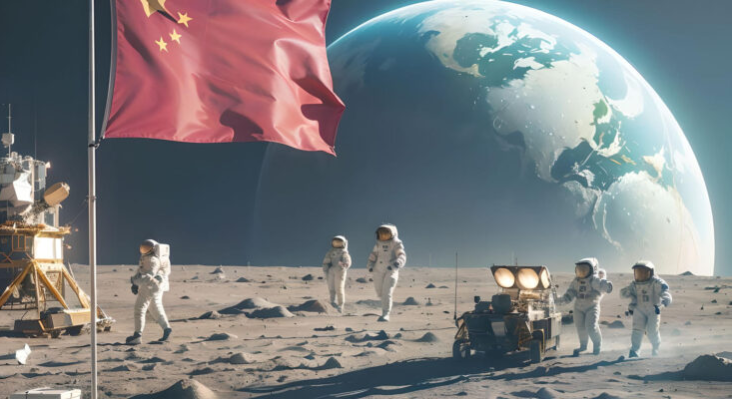– Chang’e-5 Mission:
– The unmanned Chang’e-5 spacecraft successfully landed on the moon, marking a historic achievement. Named after the Chinese moon goddess, it aims to collect lunar rock samples—something not attempted since the 1970s .
– Equipped with a lander and ascender, Chang’e-5 touched down near the 1.3 km-high Mons Rümker, a volcanic area in an unexplored part of the Oceanus Procellarum (Ocean of Storms) .
– The probe is expected to collect approximately 2 kg of material, including dust and debris from the moon’s surface . These samples will provide valuable insights into the moon’s origins, formation, and volcanic activity.
– If the samples reveal evidence of volcanic activity on the moon’s surface 1 billion to 2 billion years ago, it could potentially rewrite lunar history .
– China’s Ambitions:

– China aspires to become a space superpower alongside the US and Russia. President Xi Jinping envisions a permanent space station called Tiangong (heavenly palace) and aims to send astronauts to the moon .
– The Tiangong-1 prototype was launched in 2011, followed by the Tiangong-2 space laboratory in 2016 . China’s Long March 5B rocket and prototype spacecraft are part of these ambitious plans.
– The Chang’e-5 mission serves as a crucial test for equipment and procedures before the next phase of the Tiangong program .
– Moon Dust and Exploration:

– Moon dust, a peculiar substance, plays a vital role in understanding space exploration. Its properties are essential for future missions .
– While we await further developments, it’s fascinating to consider that China’s lunar ambitions extend beyond mere scientific curiosity. They signal the country’s intent to secure its stake on the moon .
In summary, China’s lunar endeavors are captivating, and the mysterious encounter during the Chang’e-5 mission adds an intriguing layer to our exploration of the cosmos.



